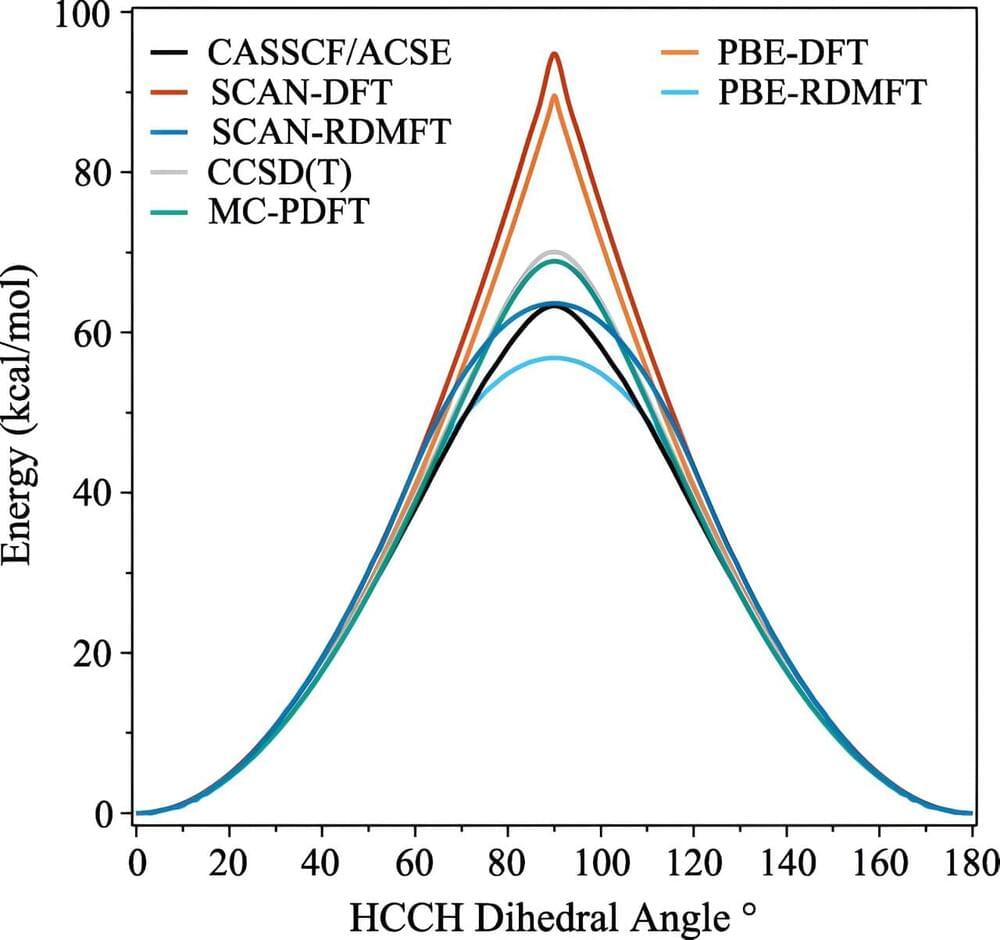Join the discussion on this paper page.



Could Earth end up with a runaway greenhouse effect like Venus someday, and what could this mean for finding life on exoplanets? This is something a recent study published in Astronomy & Astrophysics hopes to address as an international team of researchers used a 3D global climate model to investigate if Earth is destined to develop a runaway greenhouse effect like the planet Venus, which precious studies speculate was once much like Earth long ago. This study holds the potential to bring awareness of the long-term consequences of climate change and what steps can be taken to mitigate the effects.
A Runaway greenhouse effect can turn a habitable planet like Earth with a surface liquid water ocean into an inhospitable planet like Venus. (Credit: Thibaut Roger / UNIGE)
“Until now, other key studies in climatology have focused solely on either the temperate state before the runaway, or either the inhabitable state post-runaway,” said Dr. Martin Turbet, who is a research scientist at CNRS laboratories of Paris and Bordeaux and a co-author on the study. “It is the first time a team has studied the transition itself with a 3D global climate model and has checked how the climate and the atmosphere evolve during that process.”
SpaceX’s next Starship prototype is undergoing tests and preparations for launch, while other companies like Rocket Lab and ULA are also making progress in their space endeavors.
Questions to inspire discussion.
What tests is SpaceX conducting for the next Starship?
—SpaceX is conducting crucial tests for the next Starship, including a spin Prime test and a static fire of all six engines.
Tesla’s innovative design and manufacturing processes, as well as their focus on safety features, set them apart from traditional automakers and position them as a formidable competitor in the industry.
Questions to inspire discussion.
How does Tesla’s design and manufacturing processes set them apart from traditional automakers?
And so… you still believe in the Dyson Spheres …‘No predictions, especially about the future is advice attributed to physicist Niels Bohr by some and to…

Kerry Vahala and collaborators from UC Santa Barbara have found a unique solution to an optics problem. When we last checked in with Caltech’s Kerry Vahala three years ago, his lab had recently reported the development of a new optical device called a turnkey frequency microcomb that has applications in digital communications, precision time keeping, spectroscopy, and even astronomy.
This device, fabricated on a silicon wafer, takes input laser light of one frequency and converts it into an evenly spaced set of many distinct frequencies that form a train of pulses whose length can be as short as 100 femtoseconds (quadrillionths of a second). (The comb in the name comes from the frequencies being spaced like the teeth of a hair comb.)
Now Vahala (BS ’80, MS ’81, PhD ’85), Caltech’s Ted and Ginger Jenkins Professor of Information Science and Technology and Applied Physics and executive officer for applied physics and materials science, along with members of his research group and the group of John Bowers at UC Santa Barbara, have made a breakthrough in the way the short pulses form in an important new material called ultra-low-loss silicon nitride (ULL nitride), a compound formed of silicon and nitrogen.

While auroras occur at high latitude, the associated phenomena Steve and the picket fence occur farther south and at lower altitude. Their emissions also differ from aurora. A physics graduate student has proposed a physical mechanism behind these emissions, and a rocket launch to test the theory. She argues that an electric field in the upper atmosphere parallel to Earth’s magnetic field could explain the green picket fence spectrum and perhaps Steve and the enhanced aurora.
The shimmering green, red and purple curtains of the northern and southern lights — the auroras — may be the best-known phenomena lighting up the nighttime sky, but the most mysterious are the mauve and white streaks called Steve and their frequent companion, a glowing green “picket fence.”
First recognized in 2018 as distinct from the common auroras, Steve — a tongue-in-cheek reference to the benign name given a scary hedge in a 2006 children’s movie — and its associated picket fence were nevertheless thought to be caused by the same physical processes. But scientists were left scratching their heads about how these glowing emissions were produced.

Much like the humans that created them, computers find physics hard, but quantum mechanics even harder. But a new technique created by three University of Chicago scientists allows computers to simulate certain challenging quantum mechanical effects in complex electronic materials with far less effort.
By making these simulations more accurate and efficient, the scientists hope the technique could help discover new molecules and materials, such as new types of solar cells or quantum computers.
“This advance holds immense potential for furthering our understanding of molecular phenomena, with significant implications for chemistry, material science, and related fields,” said scientist Daniel Gibney, a University of Chicago Ph.D. student in chemistry and first author on the paper, published Dec. 14 in Physical Review Letters.

Neuromorphic computers are based on intricate networks of simple, elementary processors (which act like the brain’s neurons and synapses). The main advantage of this is that these machines are inherently “parallel”.
This means that, as with neurons and synapses, virtually all the processors in a computer can potentially be operating simultaneously, communicating in tandem.
In addition, because the computations performed by individual neurons and synapses are very simple compared with traditional computers, the energy consumption is orders of magnitude smaller. Although neurons are sometimes thought of as processing units, and synapses as memory units, they contribute to both processing and storage. In other words, data is already located where the computation requires it.
The video, featuring a cat named Taters, was sent back from nearly 19 million miles away by NASA’s laser communications demonstration, marking a historic milestone.
The ultra HD footage of Taters the cat was sent as the agency tries to improve space communications.